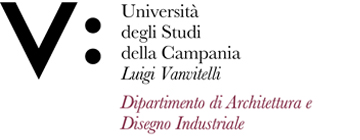Maria Antonietta SBORDONE
Insegnamento di LABORATORIO DI INDUSTRIAL DESIGN 2
Corso di laurea in DESIGN E COMUNICAZIONE
SSD: ICAR/13
CFU: 12,00
ORE PER UNITÀ DIDATTICA: 96,00
Periodo di Erogazione: Secondo Quadrimestre
Italiano
| Lingua di insegnamento | ITALIANO |
| Contenuti | L’insegnamento unisce una parte teorica ed una fondamentalmente laboratoriale che simula in aula le attività di un ufficio stile mediante la creazione di team di progetto denominati "dream team". Ogni team, sulla base dell’elaborazione di un brief di progetto, seguirà una collezione di oggetti da realizzare, dall’analisi del video scenario, fino alla ricerca dei materiali e alla prototipazione. La creazione delle singole presentazioni finali avverrà nella modalità predisposta dai docenti e verificata durante le varie fasi del corso. Il corso prevede la collaborazione con aziende del territorio. |
| Testi di riferimento | Vezzoli C., Design per la sostenibilità ambientale. Progettare il ciclo di vita dei prodotti, Zanichelli, 2016 |
| Obiettivi formativi | L’insegnamento, nel rispetto degli obiettivi formativi qualificanti della classe, integra competenze umanistiche e tecnico scientifiche per creare una figura unica e completa in grado di interagire e gestire lo sviluppo di nuovi concept e prodotti per i settori che caratterizzano il "Made in Italy". Alla fine del corso gli studenti dovranno aver acquisito: |
| Prerequisiti | L’insegnamento richiede in ingresso le conoscenze relative alle modalità di rappresentazione degli oggetti e i relativi programmi informatici. |
| Metodologie didattiche | Il corso prevede lezioni frontali nella prima parte del corso, seminari con le imprese ed un workshop suddiviso in varie fasi di lavoro fino alla restituzione finale del progetto. |
| Metodi di valutazione | La verifica del raggiungimento degli obiettivi formativi prevede diverse fasi durante il corso, con la restituzione di uno scenario di riferimento, i primi concept di progetto, il progetto finale. La prova finale verificherà tutte le capacità acquisite durante il percorso. |
| Altre informazioni | Il lavoro di progetto è svolto in team e a ciascun componente sarà affidato un ruolo |
| Programma del corso | Programma del corso Il programma del corso vede una prima parte più teorica per analizzare lo scenario del design a partire dall’analisi della mostra “New Domestic Landscapes” del 1972 al Moma di New York, per ripercorrere i progetti e le collezioni dei grandi maestri in particolare del design italiano. Una seconda parte del corso invece verte sul tema delle materie plastiche in relazione alla loro sostenibilità durante il ciclo di vita. A conclusione di questa seconda fase sono previsti seminari con aziende del settore. La terza ed ultima parte del corso avrà un carattere del tutto laboratoriale e coinvolgerà in tutte le fasi progettuali gli studenti coinvolti nel dream team: dalla costruzione dello scenario, ai disegni tecnici, al video scenario finale per la chiusura del progetto. |
English
| Teaching language | Italian |
| Contents | The teaching combines a theoretical approach and a basic laboratory part that simulates the activities of a creative office in the classroom by creating project teams called "dream teams". Each team, based on the development of a project brief, will follow a collection of objects to be designed, from the analysis of the video scenario to the research of materials and prototyping. The creation of the individual final presentations will take place in the way prepared by the professors and verified during the various steps of the course. The course includes collaboration with local companies. |
| Textbook and course materials | Vezzoli C., Design per la sostenibilità ambientale. Progettare il ciclo di vita dei prodotti, Zanichelli, 2016 |
| Course objectives | The teaching, in compliance with the qualifying educational objectives of the class, integrates humanistic and technical-scientific skills to create a unique and complete professional able to interact and manage the development of new concepts and products for the sectors that characterize the "Made in Italy". At the end of the course, students must have acquired: |
| Prerequisites | The course requires knowledge on how objects are represented and the related computer software. |
| Teaching methods | The evaluation of the achievement of the training objectives includes several phases during the course, with the return of a reference scenario, the first project concepts, and the final project. The final exam will verify all the skills acquired during the course. |
| Evaluation methods | The evaluation of the achievement of the training objectives includes several phases during the course, with the return of a reference scenario, the first project concepts, and the final project. The final exam will verify all the skills acquired during the course. |
| Other information | The project work is carried out in a team and each member will be assigned a role. |
| Course Syllabus | The program of the course sees a first more theoretical part to analyze the design scenario starting from the analysis of the 1972 "New Domestic Landscapes" exhibition at Moma in New York, to retrace the projects and collections of the great masters in particular of Italian design. A second part of the course, on the other hand, focuses on the theme of plastics about their sustainability during the life cycle. At the end of this second phase, seminars are planned with companies in the sector. The third and last part of the course will have a complete laboratory character and will involve the students involved in the dream team in all the design phases: from the construction of the scenario to the technical drawings, to the final video scenario for the closure of the project. |








